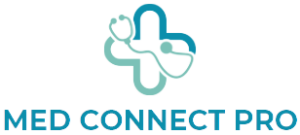Obstructive sleep apnea is an intermittent breathing disorder that causes you to stop and start breathing repeatedly during your sleep. This disrupts your sleep and increases your risk for a number of medical problems, including heart disease. Overweight patients are more likely to develop obstructive sleep apnea. Excess weight can increase a person’s upper airway collapsibility through mechanical effects on pharyngeal soft tissue and lung volume, as well as by influencing the brain to disrupt upper airway neuromuscular control. Other factors that contribute to obstructive sleep apnea include endocrine disorders such as hypothyroidism and acromegaly, and medications including corticosteroids and sedatives.
Obstructive sleep apnea causes loud snoring and interferes with the quality of your sleep. It can also lead to high blood pressure, stroke and heart disease.
Obesity
Untreated sleep apnea is linked to high blood pressure, heart failure, stroke, atrial fibrillation and other cardiovascular problems. It also contributes to glaucoma and other eye conditions. Severe OSA is also associated with poor growth (“failure to thrive”) in children and may cause behavioural problems. It is also linked to depression and irritability. Daytime sleepiness increases the risk for accidents and injuries in people who drive or work at a factory or construction site.
Enlarged Tonsils and/or Adenoid
In children with enlarged tonsils or adenoids — lymph tissues located in the back of the throat — obstructive sleep apnea can occur. Although enlarged adenoids and tonsils are typically due to infections, they can restrict airways and cause breathing difficulties.
Enlarged adenoids are more common in children and may be due to infections or certain syndromes and birth defects, including brachycephaly (a condition that causes a skull and facial shape that is shorter than normal). In these cases, surgery to remove the adenoids may help improve the child’s sleep disorder.
Typical diagnostic procedures include a medical history, physical exam, overnight sleep study and evaluation of the upper airway by visualization and X-rays. A throat or nasopharyngeal exam may also be done. In some adults, a procedure called uvulopalatopharyngoplasty (or UPPP) to remove extra tissue in the back of the mouth and throat may help with obstructive sleep apnea.
Neck Circumference
Studies have shown that a larger neck circumference can cause the airway to become narrow and compressed leading to snoring and sleep apnea. This is because fat deposits located in the neck contribute to this problem by pushing on the walls of the throat and nose.
These snoring and breathing interruptions in the night can result in a lack of oxygen in the blood. This can cause high blood pressure, heart strain and a variety of other health problems.
The good news is that the vast majority of individuals can prevent obstructive sleep apnea by maintaining proper weight and eating and drinking sensibly. A trained sleep physician can help evaluate symptoms and recommend a polysomnogram (overnight sleep study). This will help confirm the diagnosis of obstructive sleep apnea and provide a comprehensive treatment plan.
Tongue Size
The tongue can become enlarged in people with a fatty tongue or who have a chronically dry mouth, which are risk factors for sleep apnea. A large tongue also can block the airway in some cases.
Shear-wave ultrasound elastography (SWUE) is an easy and noninvasive method to measure tongue muscle elasticity during sleep. SWUE is performed by placing a transducer against the hyoid bone and symphysis of the mandible to scan the tongue in both the sagittal and coronal planes.
A pillar palatal implant is an oral surgery for reducing snoring and mild to moderate OSA in patients with normal maxillomandibular structure. This procedure is effective and well tolerated. However, the long-term effectiveness and compliance is uncertain. Further research is needed to improve the procedure.
Mouth Size
Obstructive sleep apnea may cause your child to wake up with a dry mouth or sore throat. Other symptoms include excessive daytime sleepiness and a choking sensation when eating or drinking.
Some physical traits increase your child’s risk of obstructive sleep apnea, including nasal congestion, enlarged tonsils and a small jaw (“micrognathia”). Other medical conditions, such as heart disease, high blood pressure or diabetes also can raise your kid’s risk.
A sleep study (also called a polysomnogram) helps doctors diagnose obstructive sleep apnea and rule out other causes of the disorder. Treatment options include dental devices that hold your child’s tongue forward or advance the lower jaw to keep the airway open. Surgery can also help treat some kids with mild to moderate obstructive sleep apnea.
